7 Tips for Retaining Top White-Collar Talent
Employee retention is the heartbeat of productivity in every business. Irrespective of the size and type of your company, turnover is a big disaster to handle. From manufacturing to sales or even those in senior management positions, employees must be trained and familiar with their job routines to perform excellently, which calls for effective talent retention.
It’s also no secret that retention is a growing problem. By 2023, researchers estimate that 1 in 3 employees will voluntarily quit. The context of this alarming projection is a decade of rising year-on-year churn. Churn isn’t cheap – when employees leave, there are several costs employers are left to absorb, from dampened team morale to lost productivity to the cost of recruiting.
Before we move on, let’s understand the difference between a blue-collar and a white-collar worker.
Blue collar meaning
Blue collar workers are those who perform manual labour. The name came from the early 20th century when these workers wore resistant fabrics of darker colours (e.g. blue denim or blue uniforms). They preferred these clothes because they usually got them dirty at work and often couldn’t afford to wash them frequently because of low wages.
White collar meaning
White collar workers are those who work in an office. The name comes from older times, too, when office workers usually wore white, collared shirts at work (some of them still do). The writer Upton Sinclair was the one who coined this term. White collar jobs examples include bank employees, people in finance jobs, or administrative assistants.
So, what is the difference between white collar and blue collar?
Based on their definitions, there are several differences between these two types of workers:
- Work setting. The most obvious one is that a white-collar worker works at an office, while blue-collar workers can work in various non-office locations, such as construction sites, production lines, on the road etc.
- Type of labour. While white-collar workers may often use their hands to do their job (e.g. data entry clerk), they often don’t rely on their physical abilities as blue-collar workers do. Manual labour is a characteristic of blue-collar jobs.
- Pay. White-collar jobs tend to pay better than blue-collar jobs. But, there are exceptions – for example, a skilled machine operator might make more money than a bank teller.
- Education. Many white-collar jobs require degrees, so workers in these professions are usually more educated than blue-collar workers.
- Legal regulations. Often there were specific laws for each.
Whether a white-collar or blue-collar worker, employees will assess their options when continuing with an employer and reevaluate their contract when unhappy. Is there a way to stop this rising global trend in its tracks? Read on for seven insights on how to curb churn and retain top white-collar talent.
So, how do you retain your top white-collar talent?
Tip 1: Recognize employees
Encouraging employees to acknowledge each other’s successes can increase mutual gratitude and, along with it, job satisfaction. Unlocking employee satisfaction safeguards against turnover.
As someone in HR or upper management, this is the first step to ensuring inter-connectivity between you and your team members, which often means they will think twice before moving on.
Tip 2: Invest in wellbeing
According to a 2019 Gallup study, 28% of full-time employees reported feeling burned out at work “very often” or “always.” Burnout is unmanaged workplace stress that negatively impacts individuals, leading to depletion, mental distance from their job and reduced efficiency.
Chronic burnout leads to higher rates of absenteeism and, if left unchecked, eventual turnover. Burned-out employees are 2.6 times more likely to seek another job than their non-burned-out counterparts.
Investing in employee wellbeing is key to mitigating churn. It’s imperative to prioritise wellness in our current climate, where an ‘always on’ work culture poses an invisible threat to organisations.
As wellbeing is holistic, employers must tackle it holistically. One-off gestures or health-related initiatives are only part of the picture – a fruit basket in the office or gifts given in isolation are insufficient to remedy a heightened state of mental stress alone.
Tip 3: Provide training and development opportunities
“At the beginning of the year, we published our study on Employee Turnover and the reasons why people decide to quit their jobs…We found that a staggering 83% of people would consider quitting their job because of no progression, making it the no1 reason which would lead someone to resign” – Stavros Triseliotis, Insights & Communications Specialist, CareerAddict.
But “annual, or even quarterly, training events will simply no longer cut it in this new paradigm”. Instead, to secure success, “employers need to be strategic, intentional, and proactive about informal learning”.
So what does a quality training program look like? Identifying individuals’ knowledge gaps and creating learning material that bridges these gaps is only the first step in the process.
Employees don’t just want to “learn” but to “continue iterating their skills and knowledge base”. Learning, development, and training must be ongoing to satisfy employees’ drive to grow. Learning is not a one-off event – it’s a lifelong journey – so avoid approaching this way to keep feelings of stagnancy at bay.
Tip 4: Seek feedback and check-in
“Frequently assessing the pulse and temperature of employees through impactful workplace surveys is one way to hear first-hand what’s on the minds of employees. Managers should check in with their employees often to offer and improve support. With COVID, many employees are feeling an abundance of stress and anxiety.” – Tawanda Johnson, Human Resources Thought Leader.
The importance of empowering employees with a voice can’t be overstated. Those who feel heard are 4.6 times more likely to perform at their very best.
Feedback doesn’t just improve an employee’s satisfaction, performance and loyalty. It also gives you the information necessary to keep improving your employee experience, whether in the form of new well-being-based initiatives or streamlining your continuous learning program in line with identified knowledge gaps.
Tip 5: Create a sense of community
Workplaces with a strong sense of community and high employee retention are closely linked. 51% of employees who reported having a “best friend” at their workplace also reported feeling connected to their company and working with passion, compared with only 20% of those who didn’t.
75% who had a best friend at work also planned to be with the company for at least another year, compared with 51% who didn’t.
This exemplifies the importance of community in anchoring employees, instilling a sense of belonging and loyalty. Team building activities play an integral part in creating community; they don’t need to be carried out in person to foster tight-knit team dynamics.
Tip 6: Align people around a central vision
Your vision and mission statement is your company’s reason for being. Companies rated highly on ‘purposeful mission’ see 49% lower attrition.
Your employees can’t derive a sense of purpose or meaning from their work if they aren’t sure of their reason for being there or if you have failed to communicate it adequately as their employer.
A strong, clearly communicated vision and mission better bond employees to both company and each other by uniting everyone around a shared ‘North Star’. These bonding forces are also an opportunity to hammer home your competitive edge – which is a reason for being that helps you outshine competitors.
Tip 7: Reward hard work… pay your employees well
You can give employees tangible or intangible rewards to incentivise them or express your gratitude for a job well done. Tangible rewards can encompass financial compensation, while intangible rewards can encompass words of affirmation or managerial praise.
The most appropriate reward to give will depend on the outcome you are looking to achieve. For example, a gift card or referral bonus would be a short-term motivator as this can only inspire loyalty and incentivise employees up until the point of monetary exchange.
Alternatively, tangible rewards must be recurring if you seek to ensure longer-term loyalty. Employers could achieve a similar effect by giving employees a stake in the company by offering stock options. This reward tangibly connects their success to yours, motivating them to stay and work harder to raise their stock value.
The takeaway…
Recognition, wellbeing, ongoing training, seeking feedback, reinforcing your vision, building community and rewarding employees are all tried and tested strategies for improving employee retention rates.
They are the skills required to make any of these initiatives successful and are actually at the heart of improving employee retention. Employees are a company’s lifeblood, and your company would cease to exist without their combined efforts and spirit.
Your success is merely a reflection of theirs, so focus on facilitating their success first, and the company’s will follow as a natural by-product. What do your employees want? Once you know the answer to this, how best to retain them becomes a breeze.
If you need assistance with employee management, staffing and handling all administrative tasks that keep your company moving forward – MASA is here for you. We have over 40 years of experience in temporary and permanent staffing with the expertise to boost your talent while fostering healthy retention. Contact us today to learn more about our staffing solutions.












